The choice of floor tiles in the kitchen
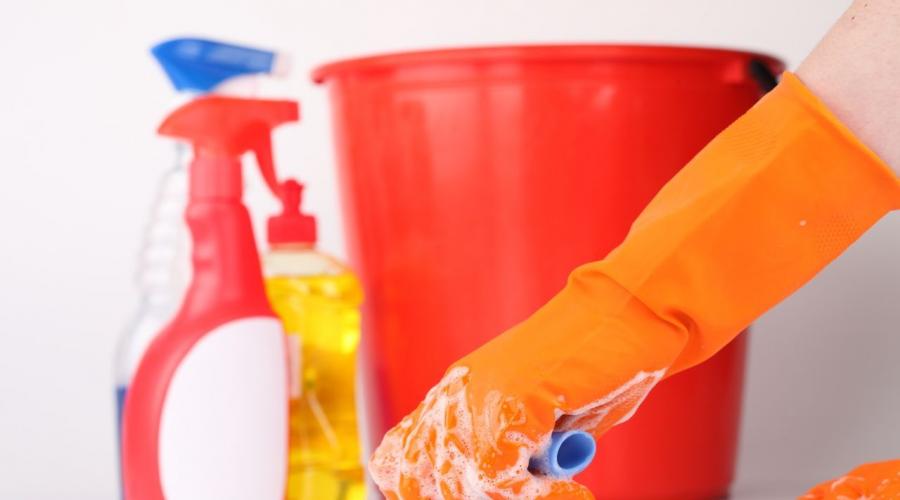
It is not in vain that kitchens in the codes of building codes refer to rooms with special operating conditions for floor coverings.
Dishwashing sinks, washing machines, dishwashers, cooking stoves, and other appliances are a source of occasional water leaks on a regular basis.
And all that moisture inevitably ends up on the floor, so tile is the best option for kitchen flooring. Due to the difficult conditions in which tile has to “serve” here, the question “how to choose floor tiles for the kitchen” is by no means rhetorical.
Criteria for choosing tiles for kitchens
Kitchen floors are constantly exposed
Kitchen floors are subjected to fairly intense exposure throughout their entire life, which is not at all surprising.
It is estimated that the average housewife spends in the kitchen from 3 to 5 hours daily, and if we consider that in our homes the kitchens traditionally also serve as dining rooms, where the whole family has breakfast, lunch and dinner every day, it becomes clear why the floors in this small room fall apart so quickly.
Tiles - the best option for the kitchen
When choosing flooring for kitchens, two main factors that will affect them should be considered: increased dampness and intense physical activity.
As the practice of using various kitchen floors shows, the best indicator in terms of durability and durability belongs to the tile.
Ceramic tiles have a number of advantages that allow them to be used for flooring in almost any room. Before choosing tiles for the kitchen floor, you should pay special attention to the defining criteria.
Resistance to chemical detergents
The tile should be well tolerated by wet cleaning using various synthetic detergents. This allows you to wash kitchen floors daily without fear that they may lose their original color vibrancy. 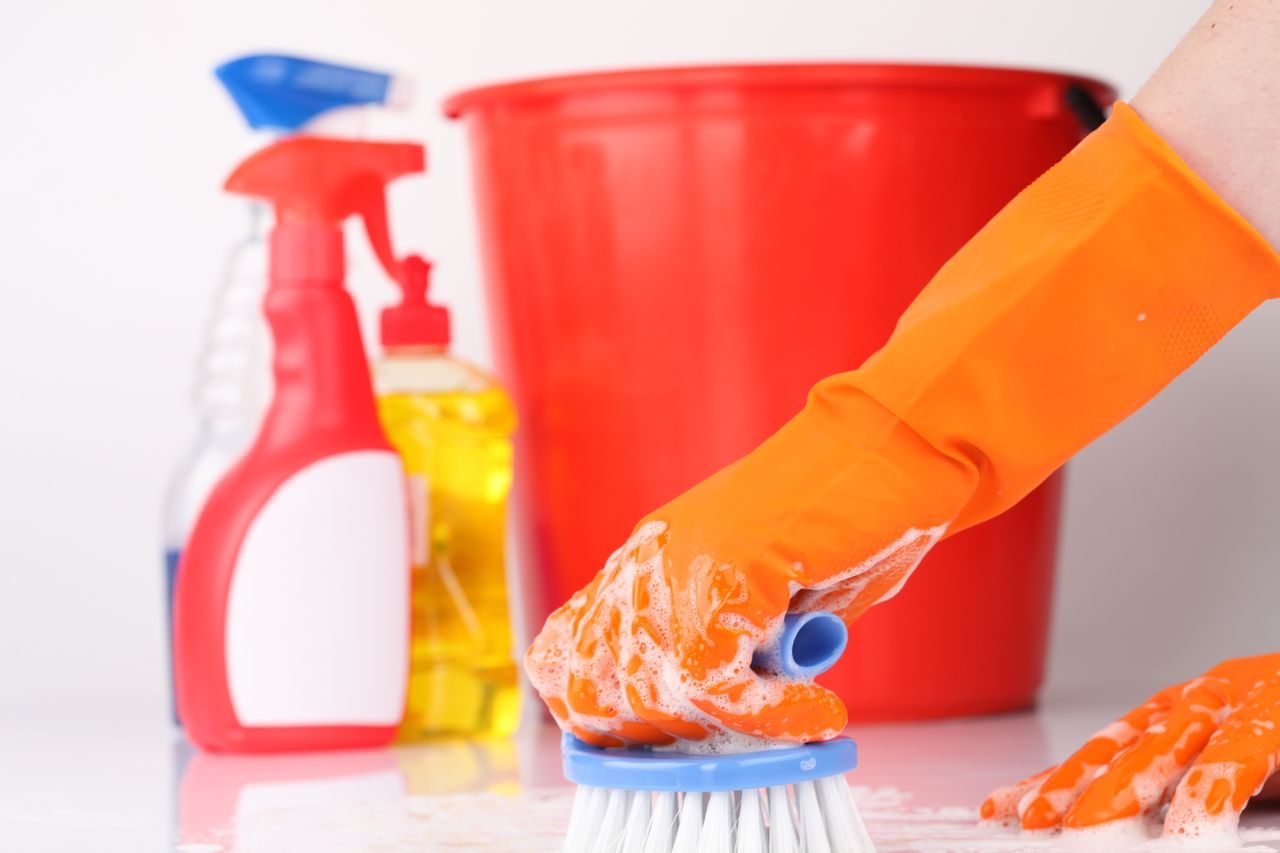
Abrasion resistance
Quite an important indicator, given the high intensity of movement in the kitchen.
Also, the resistance of the front surface to abrasion makes it possible to clean the floor covering from grease and other stubborn dirt using abrasive cleaners.
Resistance to temperature changes
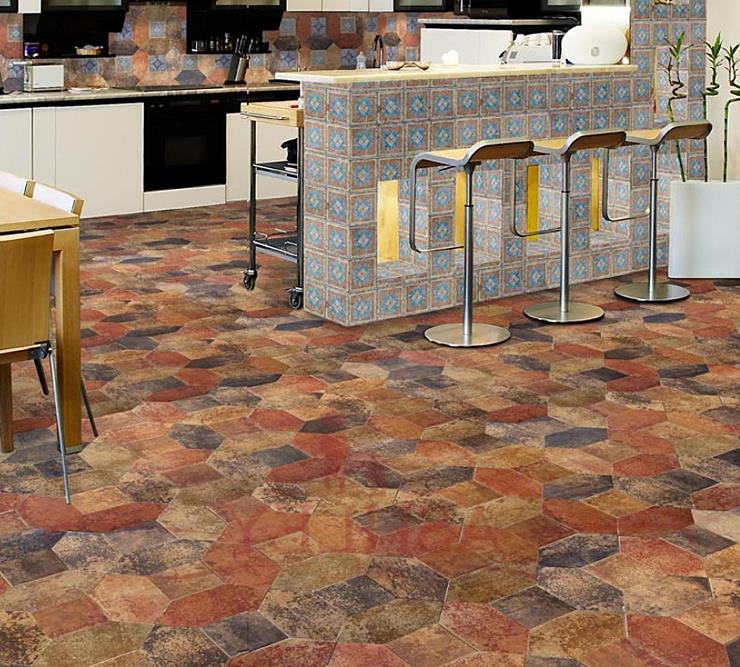 Low-quality ceramics can crack when exposed to temperature changes
Low-quality ceramics can crack when exposed to temperature changes In the process of cooking, it often becomes necessary to ventilate the kitchen: the existing ventilation systems in most cases cannot cope with the intense load in the form of smoke or excess steam.
Through open windows or vents, cold air also enters the room, concentrating at the surface of the floors. As a result, floor ceramics are most affected by temperature changes, which can lead to its peeling from the base or the appearance of microcracks on its surface, which will only expand in the future.
Ease of maintenance
The specificity of the kitchen premise implies increased contamination of the floor surface. Products accidentally dropped on the floor, grease splashing from the tile and other unintentional pollution leave a persistent mark on the surface of the tile.
It is very important that its surface can be cleaned without much effort, preventing dirt (and therefore harmful microorganisms) from taking root in secluded places.
Strength to mechanical stress
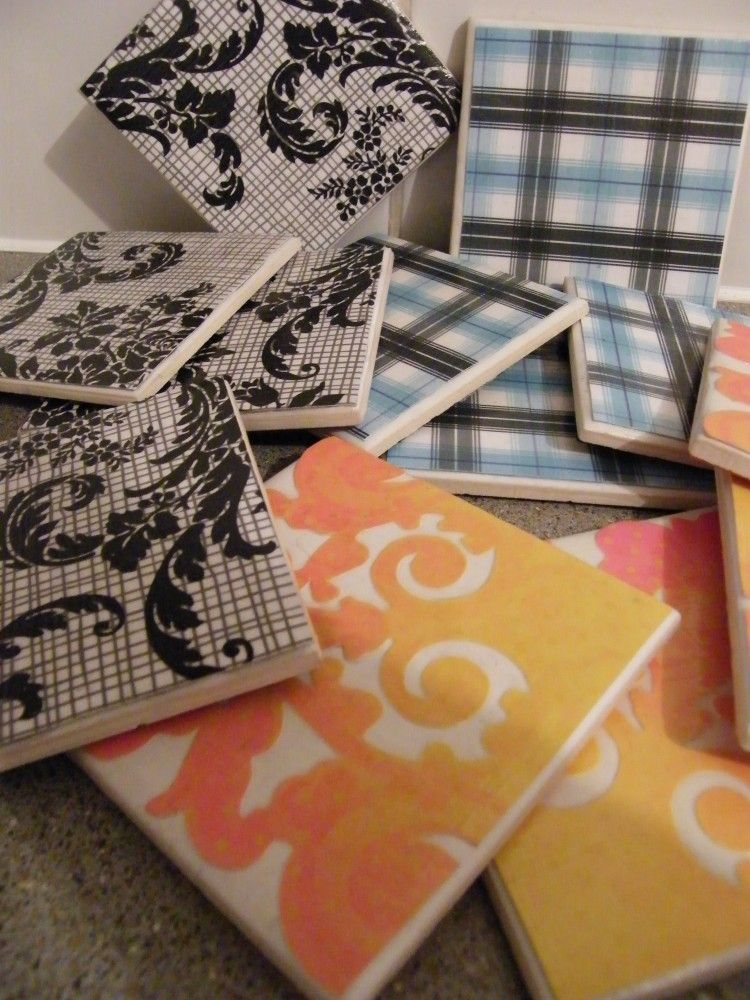 Choose durable tiles
Choose durable tiles The kitchen is a concentration of all kinds of household appliances and furniture: hob and oven, refrigerator, dishwasher, cupboard and other appliances create a considerable load on the surface of ceramics.
In addition, since the kitchen is essentially the only “production room” in our apartment, other unforeseen cases are possible here, for example, a massive dish (brazier, frying pan) accidentally falls on the floor.
At the same time, weak ceramics can break into pieces, giving the owners a lot of problems in the form of dismantling it and replacing it with a similar one.
moisture resistance
![]() This indicator is especially critical for such a “raw” room as a kitchen. Typically, the moisture absorption coefficient for ceramics is from 0.3 to 3% of their own weight.
This indicator is especially critical for such a “raw” room as a kitchen. Typically, the moisture absorption coefficient for ceramics is from 0.3 to 3% of their own weight.
For kitchen flooring, it is best to choose tiles with the best water resistance ratings. This will prevent the appearance of mold and mildew in the room, which will be very difficult to get rid of in the future.
Decorative qualities
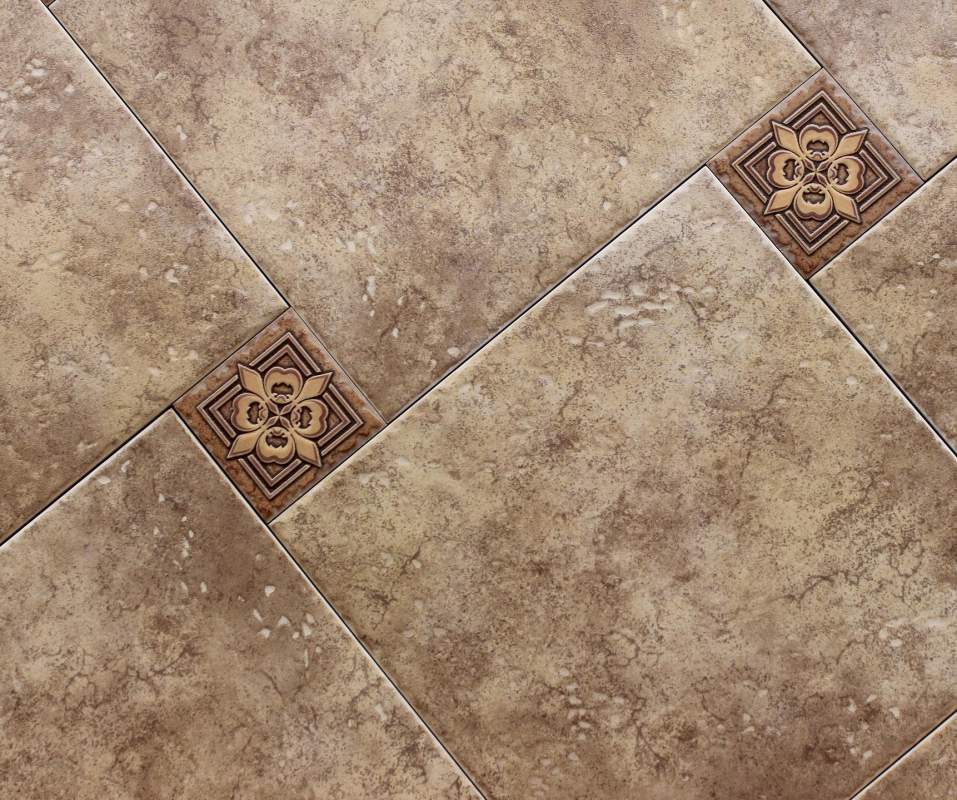 When choosing a decorative tile, consider the scheme by which the material will be laid.
When choosing a decorative tile, consider the scheme by which the material will be laid. This criterion does not directly affect the performance of the flooring, but is still no less important for creating an integral interior of the room.
On the modern market there is a huge range of all kinds of ceramic tiles of various colors and sizes, so before choosing tiles for the floor in the kitchen, you need to clearly understand what style of interior you want to end up with.
It is unlikely that tiles of bright colors will be in harmony with furniture and walls designed in pastel colors.
If you are not 100% sure of your artistic taste, then you can entrust the choice of floor tiles to a professional interior designer or turn to the help of relevant magazines and Internet sites.
Most tile producing countries have a special labeling system in place to help buyers navigate the large supply of market supply. These standards are observed in the countries of the Customs Union, the EU and the USA. For information on how to choose a sustainable ceramic coating, see this video:
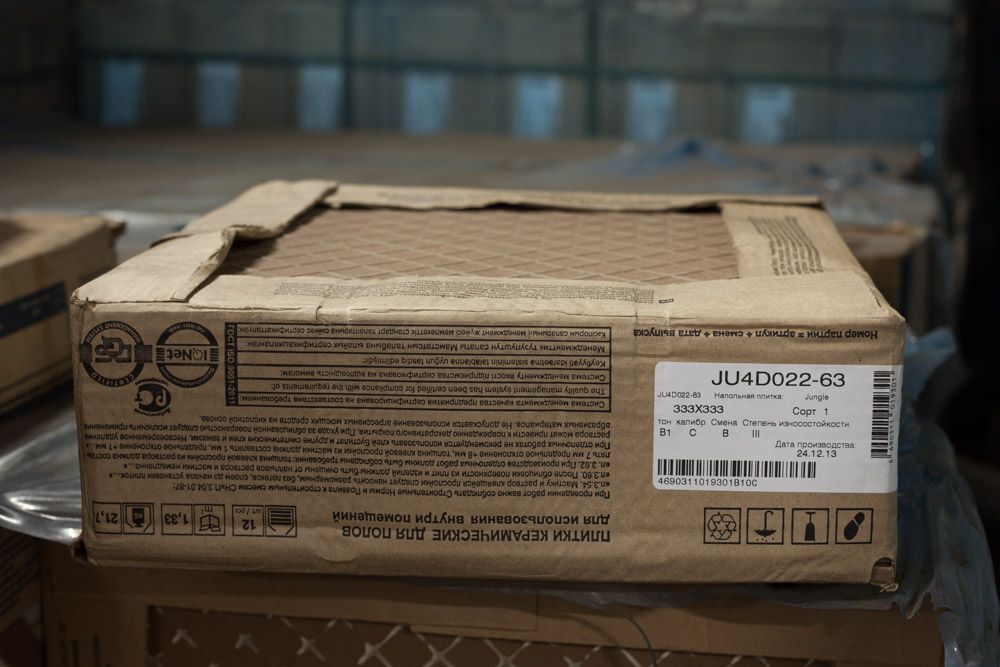 You will find the label on the side of the package.
You will find the label on the side of the package.
When choosing a tiled coating, you need to carefully read the technical conditions for its operation. In the countries of the Customs Union and a number of other states, the marking of tiled flooring intended for flooring is carried out with a badge in the form of a human footprint on the packaging container.
Tiles from Europe, China, the USA and other foreign countries can also be marked according to the international system. The table shows the symbols used in this case with their interpretation.
I class
Under no circumstances should first-class ceramics be used as flooring, not only in kitchens, but in any room. Due to its poor resistance to external physical influences, it will quickly acquire an unpresentable appearance, or even crack under external load.
It is acceptable to finish tiles of the first class of resistance only on walls, and even then it is desirable in those places that are not subjected to daily cleaning using chemical or abrasive solutions.
II class
The coating of the second class in terms of its stability indicators is quite suitable for finishing rooms that are not very frequently visited or where the load on the floors is minimal. These can be swimming pools, saunas, bathrooms and toilets.
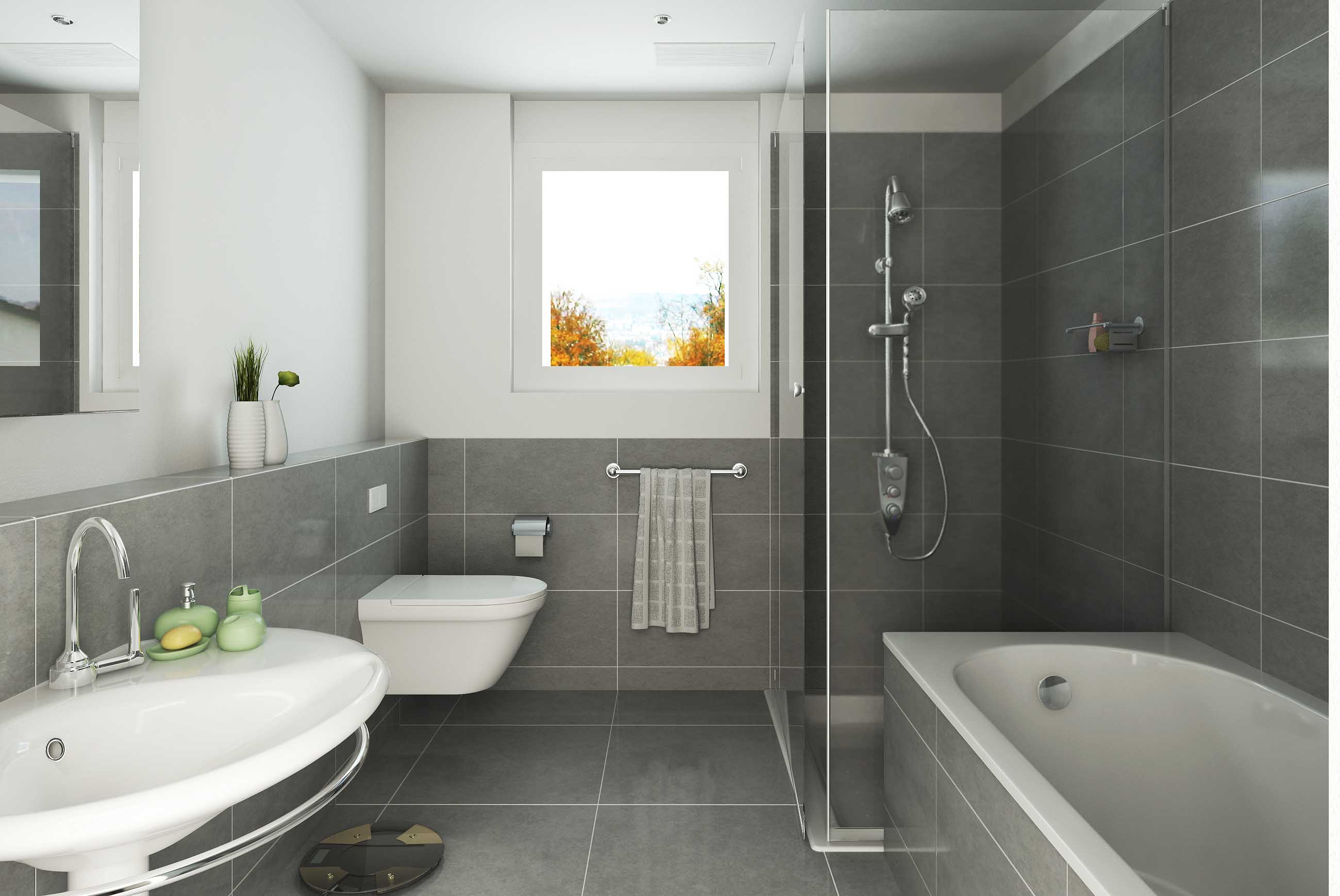 Ceramic class 2 is suitable for finishing the bathroom
Ceramic class 2 is suitable for finishing the bathroom Such a tile, although it cannot boast of high abrasion resistance, has one indisputable plus - low cost.
III class
Ceramics of the third class can be laid in any room, except for the hallway and kitchen
This option is somewhat more expensive than the previous one, but it has a higher resistance to stress and chemical attack.
Thanks to this, ceramics of the 3rd class have a wider range of applications. It can be used in almost any room of an apartment or a private house.
However, it is better not to use this option for a kitchen or hallway - in these rooms with particularly difficult flooring conditions, it is better to use a higher, 4th class. For more information on the secrets of choosing tiles, see this video:
IV class
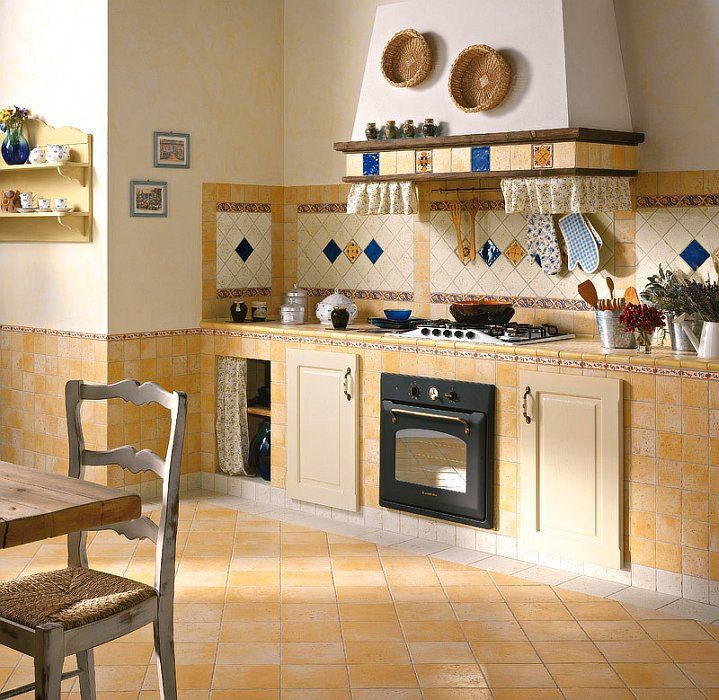 Such a coating is particularly resistant to any negative factors, whether it is the fall of heavy objects on its surface or daily wet cleaning with chemical reagents.
Such a coating is particularly resistant to any negative factors, whether it is the fall of heavy objects on its surface or daily wet cleaning with chemical reagents.
This is a great option for stairwells in porches, hallways, as well as for kitchens.
Despite the fact that the cost of such coverage is quite high, we should not forget that the miser pays twice.
Properly laid tile flooring of the 4th class can serve you for decades, retaining an almost original appearance.
V class
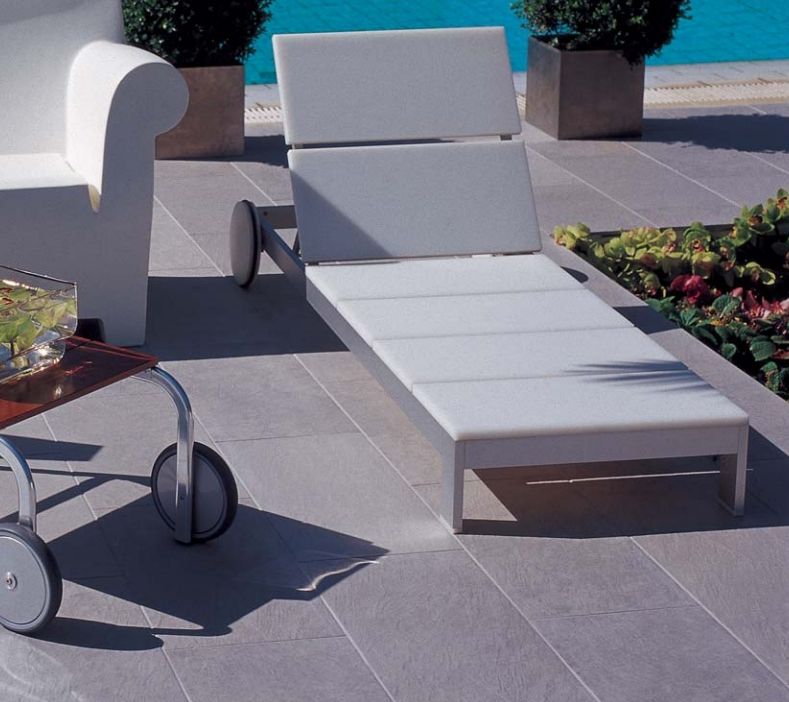 Material of this class is laid in public places
Material of this class is laid in public places The floor covering made of tiles of the 5th class has maximum strength indicators. When creating it, special attention is paid, just resistance to any possible influences.
This is achieved by introducing special components into its composition that increase the strength of ceramics. Sometimes internal reinforcement made of wire or fiber is used for the same purpose.
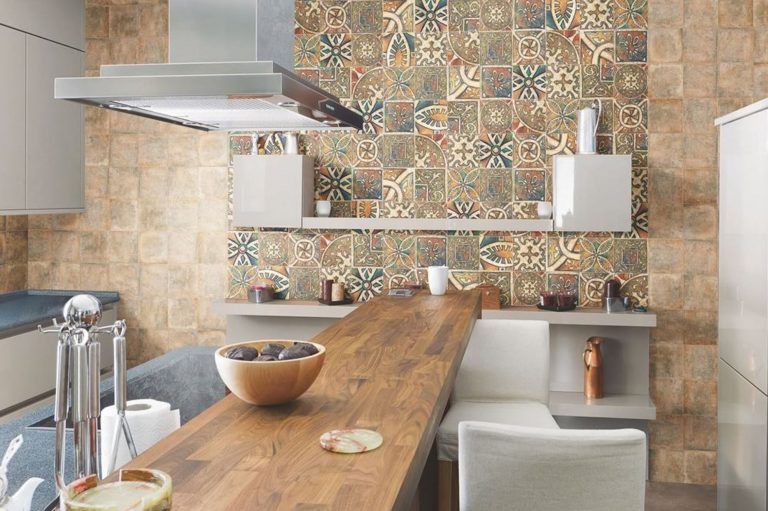 Tiled flooring of the 5th class is laid in places with especially heavy traffic or the greatest physical exertion.
Tiled flooring of the 5th class is laid in places with especially heavy traffic or the greatest physical exertion.
It can be large shopping centers and hypermarkets, cinemas and educational institutions.
Also, a particularly durable tile is used for flooring in industrial workshops at food or pharmaceutical industries.
Safety performance
Another important criterion that should be paid attention to is the safety of the floor covering. In relation to kitchen premises, this concept, first of all, means its resistance to slipping.
The safety of floors depends on how high the coefficient of friction of the surface is. Too slippery tiles, chosen as a floor covering for the kitchen, in conditions of increased dampness can cause all sorts of accidents.
According to safety criteria, tiles are usually divided into 4 groups:
- Friction coefficient< 0,75. Абсолютно безопасная поверхность, даже после увлажнения несклонная к скольжению.
- Friction index< 0,4 и >0.75. Relatively safety tiles, the probability of falling on a wet surface in this case is quite small, although it is not completely excluded.
- Coefficient from 0.2 to 0.4. Hazardous tiles are usually covered with a decorative glaze that, when wet, creates the effect of an ice skating rink.
- Coefficient less than 0.2. An extremely traumatic coating that has a sliding effect even when dry. In no case should such models of ceramics be used for flooring. Most often, such tiles are intended for decorative wall decoration. How to choose a tile and not make a mistake, see this video:
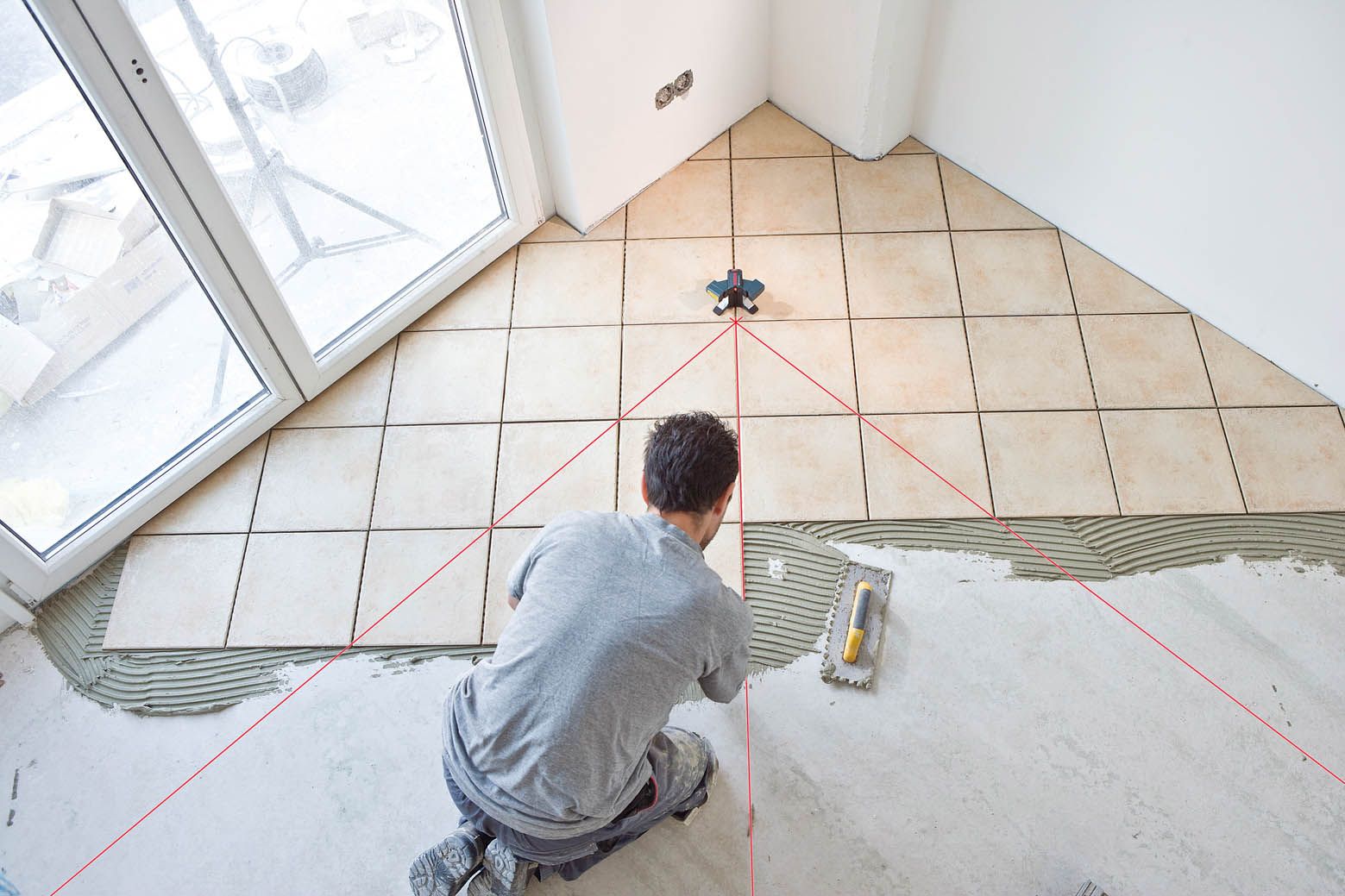 Tiles from the middle price segment are the most optimal in terms of price-quality
Tiles from the middle price segment are the most optimal in terms of price-quality If even after reading this article you do not know which tile to choose for the kitchen floor, it is better to contact the services of professional finishers. They will be able to provide you with the most complete advice, recommending the most suitable option in your particular case.
And one last tip, if you want to purchase the most durable version of ceramics for kitchen floors, choose the option of the middle price segment. As practice shows, it is in this segment that there are materials that are maximally balanced according to the "price-quality" criterion.